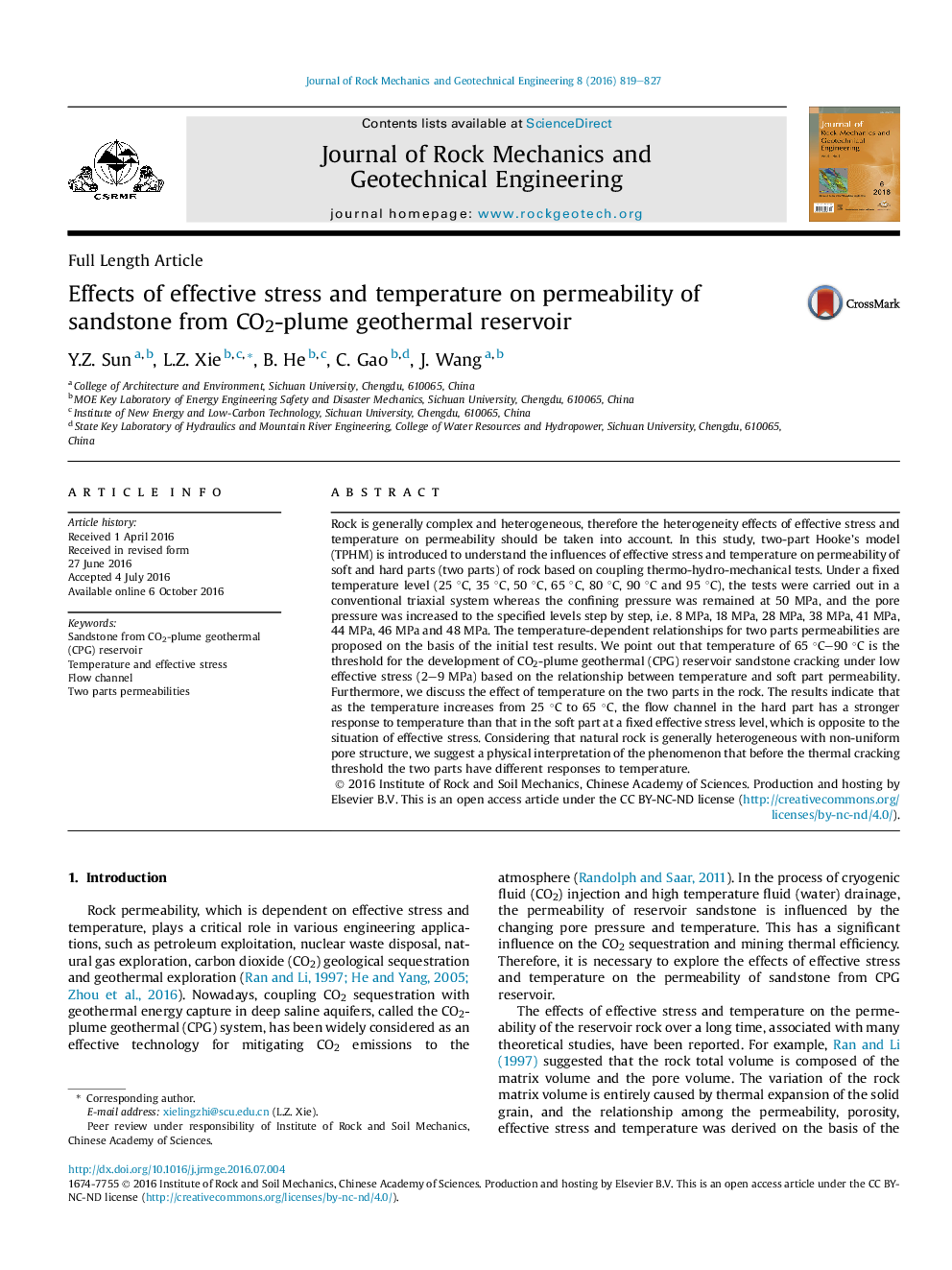| Article ID | Journal | Published Year | Pages | File Type |
|---|---|---|---|---|
| 4923806 | Journal of Rock Mechanics and Geotechnical Engineering | 2016 | 9 Pages |
Rock is generally complex and heterogeneous, therefore the heterogeneity effects of effective stress and temperature on permeability should be taken into account. In this study, two-part Hooke's model (TPHM) is introduced to understand the influences of effective stress and temperature on permeability of soft and hard parts (two parts) of rock based on coupling thermo-hydro-mechanical tests. Under a fixed temperature level (25 °C, 35 °C, 50 °C, 65 °C, 80 °C, 90 °C and 95 °C), the tests were carried out in a conventional triaxial system whereas the confining pressure was remained at 50 MPa, and the pore pressure was increased to the specified levels step by step, i.e. 8 MPa, 18 MPa, 28 MPa, 38 MPa, 41 MPa, 44 MPa, 46 MPa and 48 MPa. The temperature-dependent relationships for two parts permeabilities are proposed on the basis of the initial test results. We point out that temperature of 65 °C-90 °C is the threshold for the development of CO2-plume geothermal (CPG) reservoir sandstone cracking under low effective stress (2-9 MPa) based on the relationship between temperature and soft part permeability. Furthermore, we discuss the effect of temperature on the two parts in the rock. The results indicate that as the temperature increases from 25 °C to 65 °C, the flow channel in the hard part has a stronger response to temperature than that in the soft part at a fixed effective stress level, which is opposite to the situation of effective stress. Considering that natural rock is generally heterogeneous with non-uniform pore structure, we suggest a physical interpretation of the phenomenon that before the thermal cracking threshold the two parts have different responses to temperature.
